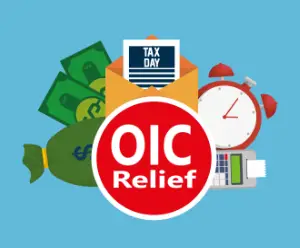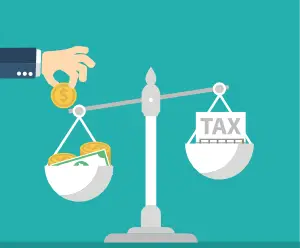
Understanding the IRS Substitute for Return
Click to ask Mike Ask Mike The Internal Revenue Service (IRS) Substitute for Return (SFR) is a term many taxpayers

An Offer in Compromise (OIC) is a powerful tool provided by the Internal Revenue Service (IRS) for individuals and businesses struggling with overwhelming tax debts. It is an opportunity to negotiate with the IRS to settle your tax liability for less than the total amount owed. This article delves into the intricacies of Offer in Compromise, explaining its eligibility criteria, the application process, and its potential benefits for taxpayers facing financial hardship.
Offer in Compromise Eligibility
Not everyone qualifies for an Offer in Compromise. To be eligible, taxpayers must meet specific criteria set by the IRS. Firstly, you must be current with all filing and payment requirements. Additionally, you should not be in an open bankruptcy proceeding. The IRS evaluates your income, expenses, asset equity, and future income potential to determine your ability to pay the debt.
The Application Process
The process of applying for an Offer in Compromise involves thorough documentation and adherence to IRS guidelines. Taxpayers must complete and submit IRS Form 656, which includes a detailed financial statement. Along with the application form, you must also submit a non-refundable application fee and an initial payment towards your proposed offer amount. The IRS typically takes several months to review and make a decision on the application.
Determining the Offer Amount
Calculating the offer amount is a critical aspect of the OIC process. The IRS considers your income, expenses, asset equity, and future income potential. This calculation can be complex, and it’s often advisable to seek professional assistance, such as a tax attorney or enrolled agent, to ensure the offer amount is accurate and in your best interest. A well-prepared offer has a higher chance of acceptance.
Benefits of an Offer in Compromise
Securing an OIC can bring significant benefits to taxpayers facing tax debt challenges. Firstly, it allows individuals and businesses to resolve their tax issues and achieve a fresh start financially. Secondly, it prevents aggressive IRS collection actions, such as wage garnishments and property seizures. Additionally, an accepted OIC can significantly reduce the total amount owed, making it more manageable for the taxpayer.
Challenges and Considerations
While an Offer in Compromise offers substantial advantages, it’s essential to be aware of the challenges and considerations. The application process can be time-consuming, and the IRS may request additional documentation or revisions to your offer. Furthermore, if you default on your tax obligations after the OIC is accepted, the IRS can nullify the agreement and reinstate the original tax debt.
In conclusion, an Offer in Compromise is a valuable option for individuals and businesses burdened with overwhelming tax debts. It provides a pathway to resolving tax issues, reducing total liabilities, and achieving financial relief.
You can now ask our AI assistant any questions you have about your tax debt or any tax-related issues. Whether you’re unsure about payment plans, need clarification on penalties, or want information on how to resolve your tax situation. Our AI is ready to assist you with all your tax-related concerns.

By interacting with our AI assistance, you agree to our terms & conditions. Enjoy our AI Tax Assistant responsibly.
Ask me any questions...
Related Posts

Click to ask Mike Ask Mike The Internal Revenue Service (IRS) Substitute for Return (SFR) is a term many taxpayers

Click to ask Mike Ask Mike The Internal Revenue Service (IRS) Substitute for Return (SFR) is a term many taxpayers

Click to ask Mike Ask Mike The Internal Revenue Service typically operates within a 10-year window, commencing from the

Click to ask Mike Ask Mike The Internal Revenue Service (IRS) operates within specific timeframes dictated by statutes of limitations

Click to ask Mike Ask Mike understanding the ins and outs of the 10-year statute of limitations (SOL) is essential.
Recent Posts

Click to ask Mike Ask Mike The Internal Revenue Service (IRS) Substitute for Return (SFR) is a term many taxpayers

Click to ask Mike Ask Mike The Internal Revenue Service (IRS) Substitute for Return (SFR) is a term many taxpayers

Click to ask Mike Ask Mike The Internal Revenue Service typically operates within a 10-year window, commencing from the

Click to ask Mike Ask Mike The Internal Revenue Service (IRS) operates within specific timeframes dictated by statutes of limitations

Click to ask Mike Ask Mike understanding the ins and outs of the 10-year statute of limitations (SOL) is essential.
Disclaimer: This is educational content, not legal, accounting, or tax advice.
This is a tax debt resource website, not to be used in lieu of a tax attorney or for legal advice. All information, Ai chat responses, articles, materials, and content are intended to inform users on a variety of tax topics. In no way is it intended to be construed as accounting, legal, tax, other services or advice. This site is not intended to be used to avoid tax penalties or tax debt that may be imposed by law. Terms and Conditions. Your use of this site constitutes acceptance of the following terms and conditions.
This is a tax debt resource website, not to be used in lieu of a tax attorney or for legal advice. All information, Ai chat responses, articles, materials, and content are intended to inform users on a variety of tax topics. In no way is it intended to be construed as accounting, legal, tax, other services or advice. This site is not intended to be used to avoid tax penalties or tax debt that may be imposed by law. Terms and Conditions. Your use of this site constitutes acceptance of the following terms and conditions.
© 2023 · Tax Debt Monster, Inc. All rights reserved

For all Tax Professionals that would like to partner up with us. By partnering with us, you’ll help us connect and make a positive impact in the tax community. Partner up with us and receive a complimentary Ai Tax Sidekick to help support your clients at no cost! Click here if you’re interested in our Partner-Up program

By interacting with our AI assistance, you agree to our terms & conditions. Enjoy our AI Tax Assistant responsibly.
How may I help you with your tax issue?